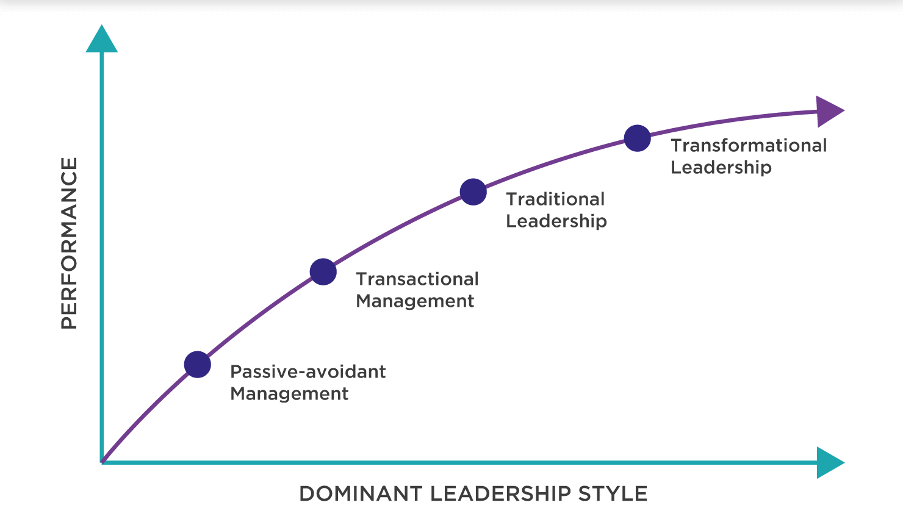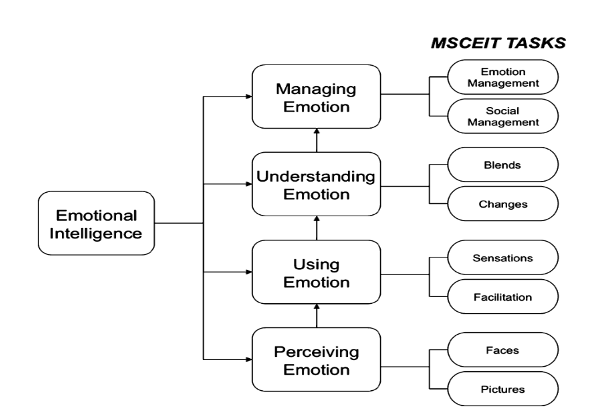By Beste Özalevli, Supervision by Dr. Anna Rostomyan
Introduction
While in earlier years effective leadership was associated with technical expertise and Intelligence Quotient (IQ), in today’s fast-paced business environment this is no longer the case. Emotional Intelligence (EI) has become a critical skill for successful leaders. This is due to the realization that the ability to understand, manage and empathize with one’s own emotions are crucial skills in leadership. Leaders who have high EI can make better decisions, build stronger relationships and create positive team culture even under pressure. This article shows the benefits of EI in leadership, highlighting how emotional intelligence enhances success of leadership by examining existing literature and key case studies.
Leadership Theories
Leadership theories have developed with different approaches over time and revealed the multifaceted structure of leadership. To briefly define some theories of leadership, Great Man Theory argues that leaders have innate characteristics and lead with heroic qualities (Dobbins & Platz, 1986).
The other theory is Trait Theory, this theory suggests that leadership depends on physical and personality traits. However, these theories have been criticised over time for their inability to identify common leadership characteristics (Ekvall & Arvonen, 1991).
Moreover, Situational Theory emphasises that leadership style should change according to the context and the maturity level of followers (Greenleaf, 1977).
The last theory of leadership is that Style and Behaviour Theory argues that democratic, autocratic and laissez-faire leadership approaches can be effective in different situations (Yukl, 2001).
Table 1: (Marketer, 2022)

Leadership Styles
The leaders who have passive avoidant management style avoid change, do not try to make improvements. There are several survey studies about effects of passive leadership on safety climate and safety behavior in followers. The studies show that passive leadership is associated with role conflict, role ambiguity, and conflicts among co-workers (Skogstad et al., 2007).
Leadership styles vary in terms of the ways in which leaders achieve organisational goals and influence followers. Transactional leadership adopts an approach that reinforces performance goals with rewards and bases the leader-follower relationship on mutual benefit (Bass, 1994). This style usually sets clear goals and controls the behaviour of followers through management exceptions.
Traditional leadership encourages people to do their jobs by providing them with guidance, direction and motivation (Yusup, 2002). The key focus of a traditional leadership is to improve the business position of the company. The concept of leadership will be defined as an answer to the objective conditions in traditional societies. This opinion is based on two theories that are mentioned in the previous section are The Greatmen Theory and Trait Theory.
On the other hand, transformational leadership aims to motivate individuals to achieve higher goals and support their personal development. The key elements of this style include idealised influence, inspirational motivation, mental stimulation and individual attention.
In conclusion, these leadership styles show that leaders need to be flexible and adaptable to be effective in different contexts.
Emotional Intelligence in Successful Leadership
Emotional intelligence (EI) was first introduced by Peter Salovey and John D. Mayer in the 1990s and then made popular by Daniel Goleman. He mentioned that emotional intelligence is the ability to manage, understand and recognize our own emotions and the emotions of others (Goleman, D., 1998).
The concept of emotional intelligence is widely accepted but some psychologists believe that its explanatory value may be limited because EQ cannot be tested like general intelligence. On the other hand, Goleman (1998) identifies emotional intelligence as the strongest predictor of workplace success. Daniel Goleman’s work shows that self-awareness, empathy and soft skills are significant for effective leadership and these skills are related to EI.
There are different performance tests that measure different components of emotional intelligence. For instance, one of them is the Diagnostic Analysis of Nonverbal Accuracy Scales (DANVA and DANVA-2; Nowicki & Duke, 1994). Elsewhere, this and other measures have been described in detail (Brackett & Geher, 2006. A comprehensive performance test of emotional intelligence is the Mayer-Salovey-Caruso Emotional Intelligence Test (MSCEIT; Salovey et al., 2002) for adults and the Mayer-Salovey-Caruso Emotional Intelligence Test, Youth Version (MSCEIT-YV; Mayer, Salovey, & Caruso, 2005) for adolescents (12-17 years). They require individuals to solve tasks related to each of the four abilities that’s why these are considered performance tests (Mayer, Salovey, Caruso, & Sitarenios, 2003). The adult version of the MSCEIT has eight tasks as shown in the figure below.
Table 2: Rivers, S., Brackett, M., & Salovey, P. (2008)

Brackett et al. (2011) and Johnson (2016) illustrate how EI improves interpersonal relationships, adaptability and stress management which are crucial for successful leadership in organizations. Brackett et al.’s research (2011) highlights that individuals with higher emotional intelligence (EI) can build stronger relationships with other people and they can create supportive, social environments compared to people who have lower EI score. This fosters better team collaboration and effective conflict resolution in leadership. Johnson, B., (2016) focuses on adaptability and stress management in his research. It demonstrates that leaders with high EI are more durable under pressure. It means a high EI enables leaders to lead their teams effectively even in the face of challenges.
In conclusion, the literature suggests that emotional intelligence plays an important role in successful leadership by improving interpersonal skills, stress management and adaptability. These researches emphasize that leaders with high emotional intelligence are more successful in managing emotions, fostering cooperation and overcoming workplace challenges. These abilities are essential for building strong teams, resolving conflicts and maintaining a positive, productive work environment and long-term success in leadership positions. Therefore, the level of EI should be considered a crucial skill of leadership.
Research Methodology and Analysis of Findings
This research is a literature review. The research by Kerr et al. (2006) which investigated the relationship between managers’ emotional intelligence (EI) levels and leadership effectiveness ratings, involved the application of the Mayer Salovey Caruso emotional intelligence test (MSCEIT), the EI test, to 38 leaders in a large manufacturing organisation. Supervisory leadership effectiveness was assessed by subordinate ratings on an attitude survey questions connected with supervisor performance. All data consist of 1,258 survey responses. The results of the data analysis suggest that half of the MSCEIT scores shows that this is a strong predictor of successful leadership, particularly the branches about the experiential EI domain (r=0.50, p<0.001). On the other hand, the relationship between supervisor ratings and EI domain (r=−0.12) was not as expected. The findings show that the experiential EI branch of MSCEIT strongly predicts leadership success (r = 0.50, p <0.001). This indicates that managers’ competences such as emotional awareness and capacity to process emotional information play an important role in developing effective leadership skills. Experiential EI particularly emphasises that leaders’ ability to make sense of and manage emotions is critical. For example, an effective leader’s ability to understand the emotional needs of subordinates in crisis or challenging situations and to display a leadership style appropriate to these needs can improve team performance. Moreover, negative correlation (r = -0.12) may be due to a perceptual mismatch or a methodological factor. For example, subordinates may perceive their leaders’ high level of EI as manipulative behaviour and therefore may have given lower ratings.
Discussion
The results of this study confirm the important role of emotional intelligence (EI) in leadership effectiveness, as evidenced by existing literature. The results of the Mayer-Salovey-Caruso Emotional Intelligence Test (MSCEIT) indicate that experiential emotional intelligence, particularly emotional awareness and the ability to process emotional information are very important for successful leadership. These findings align with previous research (Brackett et al., 2011; Johnson, 2016). This research highlights the importance of EI in fostering strong interpersonal relationships, adaptability and stress management.
Leaders with high EI provide several advantages for the team and the company. Firstly, their ability to manage emotions builds trust and loyalty with team members and also it can create a supportive and collaborative environment. Secondly, high-EI leaders demonstrate strong resilience during crises. For example, they can stay calm under pressure while guiding their teams effectively. Lastly, their adaptability provides them to navigate the complexities of fast-changing business environments and ensure organizational success.
This research’s findings also conduct potential challenges or limitations associated with EI in leadership. For example, leaders who are overly empathetic may find it difficult to make difficult decisions such as implementing disciplinary measures or managing conflicts, potentially jeopardising organisational effectiveness. In addition to this, there is a negative correlation between subordinates’ scores and emotional intelligence in the study points to a potential perception gap where highly emotional intelligent behaviours may be interpreted as manipulative by subordinates. This emphasises the importance of balancing emotional intelligence with transparency and authenticity in leadership practices. It means that a healthy workplace with successful leadership can be created by high EI and also transparency, autheticity.
Conclusion
In conclusion, this paper shows that emotional intelligence is a critical skill for effective leadership in today’s business environment. Literature and findings underline the key benefits of EI, such as fostering trust, increasing adaptability and improving stress management. Leaders who have high EI are better able to build strong teams, resolve conflict and maintain a healthy workplace culture, all of which contribute to sustainable organisational success.
Developing emotional intelligence should be a priority for current and future leaders for positive workplaces. EI not only enhances individual leadership abilities, but also impacts team and organisational performance positively. Leaders must develop self-awareness, empathy and emotional regulation to effectively cope with workplace challenges.
Organisations can play a vital role in developing EI by incorporating it into their leadership training programs. To this end, organisations can offer EI skills workshops focusing on emotional awareness, allow leaders to practice empathy and active listening, and encourage them to receive feedback on their EI skills and development. In such a case, effective leaders can be produced and these leaders will achieve greater results for the organisation as well as support teamwork.
References
-
Bass, B. M., & Avolio, B. J. (1994). Improving organizational effectiveness through
transformational leadership. Sage.
-
Brackett, M. A., & Geher, G. (2006). Measuring emotional intelligence: Paradigmatic
diversity and common ground. In J. Ciarrochi, J. R. Forgas, & J. D. Mayer (Eds.),
Emotional intelligence in everyday life (2nd ed., pp. 27–50). Psychology
Press/Erlbaum.
-
Brackett, M. A., Rivers, S. E., & Salovey, P. (2011). Emotional intelligence: Implications for personal, social, academic, and workplace success. Psychology, 1(1), 88–103.
https://doi.org/10.1111/j.1751-9004.2010.00334.x
-
Dobbins, G. H., & Platz, S. J. (1986). Sex differences in leadership: How real are they?
Academy of Management Review, 11(1), 118–127.
-
Ekvall, G., & Arvonen, K. (1991). Change-centered leadership: An extension of the
two-dimensional model. Scandinavian Journal of Management, 7(1), 17–26.
-
Goleman, D. (1998). The emotional intelligence of leaders. Leader to Leader, 1998(10), 20–26. https://doi.org/10.1002/ltl.40619981008
-
Greenleaf, R. K. (1977). Servant leadership: A journey into the nature of legitimate power and greatness. Paulist Press.
-
Johnson, B. (2016). Impact of emotional intelligence on academic achievement and
leadership: A review article. BMH Medical Journal, 3(3), 94–99.
-
Kerr, R., Garvin, J., Heaton, N., & Boyle, E. (2006). Emotional intelligence and leadership effectiveness. Leadership & Organization Development Journal, 27(4), 265–279.
https://doi.org/10.1108/01437730610666028
-
Marketer. (2022, October 6). Transactional vs. transformational leadership: Which style fits you and your team. Jelvix. https://jelvix.com/blog/transactional-vs-transformational-leadership
-
Mayer, J. D., Salovey, P., Caruso, D. R., & Sitarenios, G. (2003). Measuring emotional
intelligence with the MSCEIT V2.0. Emotion, 3(1), 97–105. https://doi.org/10.1037/1528-3542.3.1.97
-
Nowicki, S., & Duke, M. P. (1994). Individual differences in the nonverbal communication of affect: The Diagnostic Analysis of Nonverbal Accuracy Scale. Journal of Nonverbal
Behavior, 18(1), 9–35. https://doi.org/10.1007/BF02169077
-
Rivers, S., Brackett, M., & Salovey, P. (2008). Measuring emotional intelligence as a mental ability in adults and children.
-
G. J. Boyle, G. Matthews, & D. H. Saklofske (Eds.), ThSAGE handbook of personality theory and assessment: Volume 2 — Personality measurement and testing (pp. 440–460). SAGE Publications. https://doi.org/10.4135/9781849200479
-
Salovey, P., Mayer, J. D., & Caruso, D. (2002). The positive psychology of emotional
intelligence. In C. R. Snyder & S. J. Lopez (Eds.), Handbook of positive psychology
(pp. 159–171). Oxford University Press.
-
Skogstad, A., Einarsen, S., Torsheim, T., Aasland, M. S., & Hetland, H. (2007). The
destructiveness of laissez-faire leadership behavior. Journal of occupational health
psychology, 12(1), 80–92. https://doi.org/10.1037/1076-8998.12.1.80
-
Yukl, G. (2001). Leadership in organizations (5th ed.). Prentice Hall.
-
Yusup, M. (2022). The concept of leadership in traditional and modern. Indonesian Journal of Education (INJOE), ) 2(1), 41-49



































